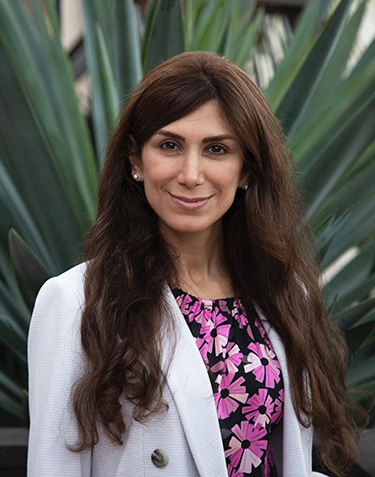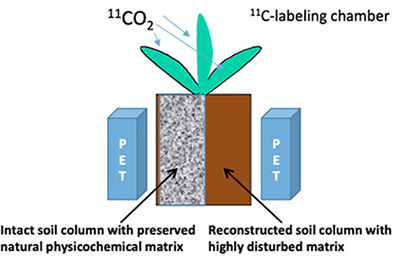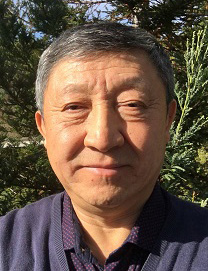Shiva Abbaszadeh, assistant professor of electrical and computer engineering at UC Santa Cruz, has received a major grant from the Department of Energy (DOE) providing nearly $2 million over three years to develop new imaging technology for studying the complex interactions between plant roots and soils.
The project will develop a system that uses the medical imaging modalities of positron emission tomography (PET) and computed tomography (CT), and optimizes them for imaging living plants and the area around plant roots known as the rhizosphere. Activities in the rhizosphere influence many important processes at multiple scales in the Earth system, including the global cycling of carbon. Studying the rhizosphere, however, has always been a challenge.
Abbaszadeh’s Radiological Instrumentation Laboratory at UCSC’s Baskin School of Engineering focuses on developing new imaging and sensing technologies, mostly for biomedical applications. Her collaborators on the new project include soil ecologist Weixin Cheng, professor and chair of environmental studies at UCSC, and Stanford University radiologists Adam Wang and Craig Levin.
Abbaszadeh said she talked to Cheng after seeing a DOE call for proposals to develop better imaging techniques for studying plants. “He told me they really need this kind of imaging tool for the rhizosphere,” she said. “It’s an exciting project, applying new imaging technologies to answer very interesting questions.”
Cheng studies the ecology of the rhizosphere and its role in carbon and nitrogen cycles. He said the role of the rhizosphere is a crucial missing piece in understanding the cycling of carbon between the atmosphere, where carbon dioxide contributes to global warming, and terrestrial ecosystems, where large amounts of carbon are stored in soil organic matter.
“The rhizosphere is really a mystery spot in ecology,” Cheng said. “So much is unknown there because it is so difficult to study. The soil is opaque, so we can’t do what we do with ease aboveground, and if you dig and disturb the system you’re not observing anything realistic.”
Abbaszadeh plans to combine her lab’s novel radiation detectors and other advanced technologies to enable a low-cost PET/CT system for plant and soil imaging. In medical imaging, PET/CT combines the excellent anatomical imaging of CT scans with the ability of PET to trace metabolic activity in the body using small amounts of radioactive material called radiotracers.
For plant imaging, the researchers will use carbon-11, a short-lived radioisotope of carbon, to trace the carbon that is absorbed by plants as carbon dioxide, incorporated into carbohydrates during photosynthesis, and transported into the roots. Some of that carbon enters the soil in root exudates, where it can be metabolized by soil microbes or stabilized by soil particles.
“We know that biological activity in the rhizosphere occurs in hot spots that are very dynamic,” Cheng said. “We want to be able trace this shifting constellation of hot spots and how they are influenced by the soil matrix. We also want to see how much of the carbon is being metabolized by the plant roots and how much is used by microbes in the rhizosphere.”
A third question the researchers plan to address is how much of the carbon in root exudates gets stabilized by clay particles in the soil. The answers to these questions may have important implications for understanding carbon sequestration in soils and its role in the carbon cycle and climate change.
In order to answer these questions, the researchers will develop innovative instruments with improved capabilities, including an increase in the sensitivity of the PET system for dynamic imaging of isotopes with a short half-life.
“It’s not as if PET and CT of plants has not been done before, but we are developing new technologies with better performance for capturing the plant and soil system,” Abbaszadeh said.





